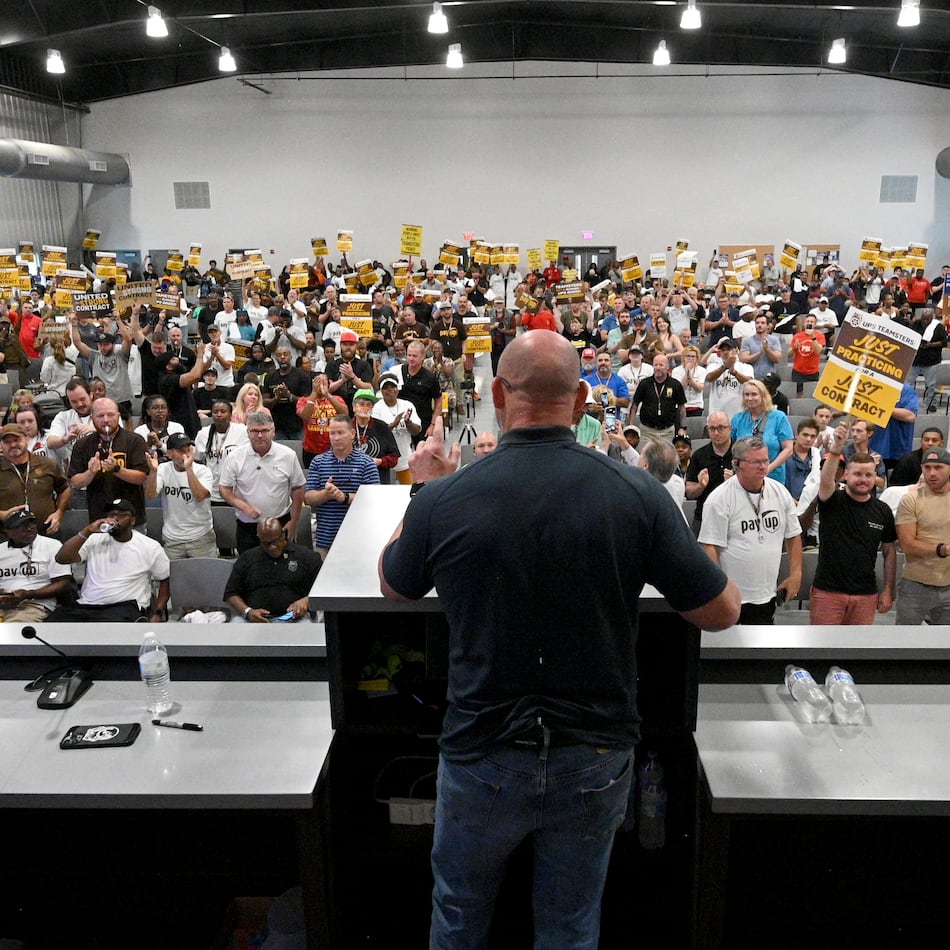The author, Chet Fuller, was a reporter, columnist and editor for The Atlanta Journal-Constitution for 26 years until his retirement in 1998. He died in August 2022. An Atlanta native born at Grady Hospital, Fuller was one of the newspaper’s first Black journalists. This column was originally published Jan. 9, 1994
Throughout the 1970s, there was a slogan that was popular with public officials around the country: Crime is everybody’s business.
Many of us, however, weren’t convinced that that message included us. Some of us thought of crime as mainly an inner-city problem: If we moved far enough away, we wouldn’t have to worry about it.
Others believed crime was a Black problem or a problem of poor people or drug dealers. Boy, were we wrong!
The painful realities of the ‘90s, with senseless carjackings, robberies that maim or kill, domestic violence and gun-toting children killing other children, have brought home the truth of that old saying in ways that have left us filled with fear and rage - and, at the same time, feelings of impotence and shame because we just don’t know how to stop what’s happening.
But we finally seem to be realizing - whether we live in urban or rural areas, in expensive high-rises or in hovels on the poor side of town - that we are all affected by violent crime run amok.
A topic of concern
Just in the past week, our intense fear and concern have been on prominent display:
- In Washington, D.C., the Rev. Jesse Jackson held a three-day conference on black-on-black violence.
- The “Larry King Live” TV show was devoted to a town hall meeting on “Violence in America.”
- In Atlanta, about 200 Georgians - experts as well as victims and ordinary people - aired their thoughts on the subject in a gathering that was broadcast statewide.
Meanwhile, several members of Congress have sent up trial balloons for new get-even-tougher measures that could become components of new crime legislation.
Gov. Zell Miller has unveiled his own sweeping package, and suburban legislators say they will push for stronger laws to help them fight an invader that has taken even once-quiet bedroom communities by storm.
The problem has changed our lives in myriad ways: Many of us have curtailed our travel alone, particularly at night and have purchased elaborate alarm systems, guns or guard dogs.
All this is reducing the quality of our lives, and we have yet to reach a national consensus on how to change things. But even so, the situation is far from hopeless.
Credit: Fuller Family
Credit: Fuller Family
A beacon of hope
Dr. Micheal Pappafagos, president of the Lighthouse Foundation in Chelmsford, Mass., believes his non-profit organization has a proven program to help stem violence among young people and alter their attitudes and outlook on life.
It has worked for nearly 27 years at the Lighthouse School, turning around the lives of hundreds of children sent to it by the courts, by families unable to cope and sometimes by tragic circumstance.
Most of these children, Pappafagos says, had attempted murder or suicide or been seriously involved in drugs or crime.
”We get beneath academics, beneath drugs and gangs,” he says, “to teach kids life preparation skills. We teach teachers how to provide practical intervention, using specific techniques to help children learn who they are and understand how they think - and why they think and feel the way they do.
”We call it bioeducation. It’s life education. We give children the skills to understand and evaluate what’s happening around them and to be able to feel good about themselves.”
There are 36 million children in this country between the ages of 5 and 14. Our program costs $290 per child per year. If other schools would sign on, we could reach all our children in 10 years. It takes two years to fully implement the program in a school and train the staff.”
Coping with stress
Joseph Sundram, executive director of the Government, Education, Community Division of the Institute of HeartMath, a non-profit research and training group in Boulder Creek, Calif., has a similar program aimed at adults as well as children.”
Our children have made us look at the violence and rage within all of us,” he says. ‘’Adults in this society are fractured along many lines.
”We fight about religion, politics, language, which policies we ought to follow. That’s what we’re modeling for our children. They see through us.
”The root cause of our violence,” Sundram says, “is the inability of people to manage the emotional experiences of their lives, to deal with animosity, frustration, depression and high stress levels.”
His company has been working with school systems (including the DeKalb County system), corporations, prison staffs, religious organizations and even the military.
”We use a very simple program that shows people how to get to those feelings when our hearts are full and we’re emotionally satisfied,” Sundram says.
”Pretend you’ve just had a wonderful experience at home and you leave for work but somebody cuts you off in traffic. Because you’re feeling good about that good experience, you laugh off the incident on the highway. But if you’ve just had a bad experience and you’re stressed out, you might pull over and try to beat the person to a pulp.”
I know it sounds simple,” he says, “but stress is like a mad dog chasing you, and we have to learn how to balance the experiences of our lives so we can guarantee ourselves more fulfillment, which produces more caring. This is not touchy-feely, pseudo-religious babble. It’s training that can change the way we react and live in this world.”
About the Author
Keep Reading
The Latest
Featured



